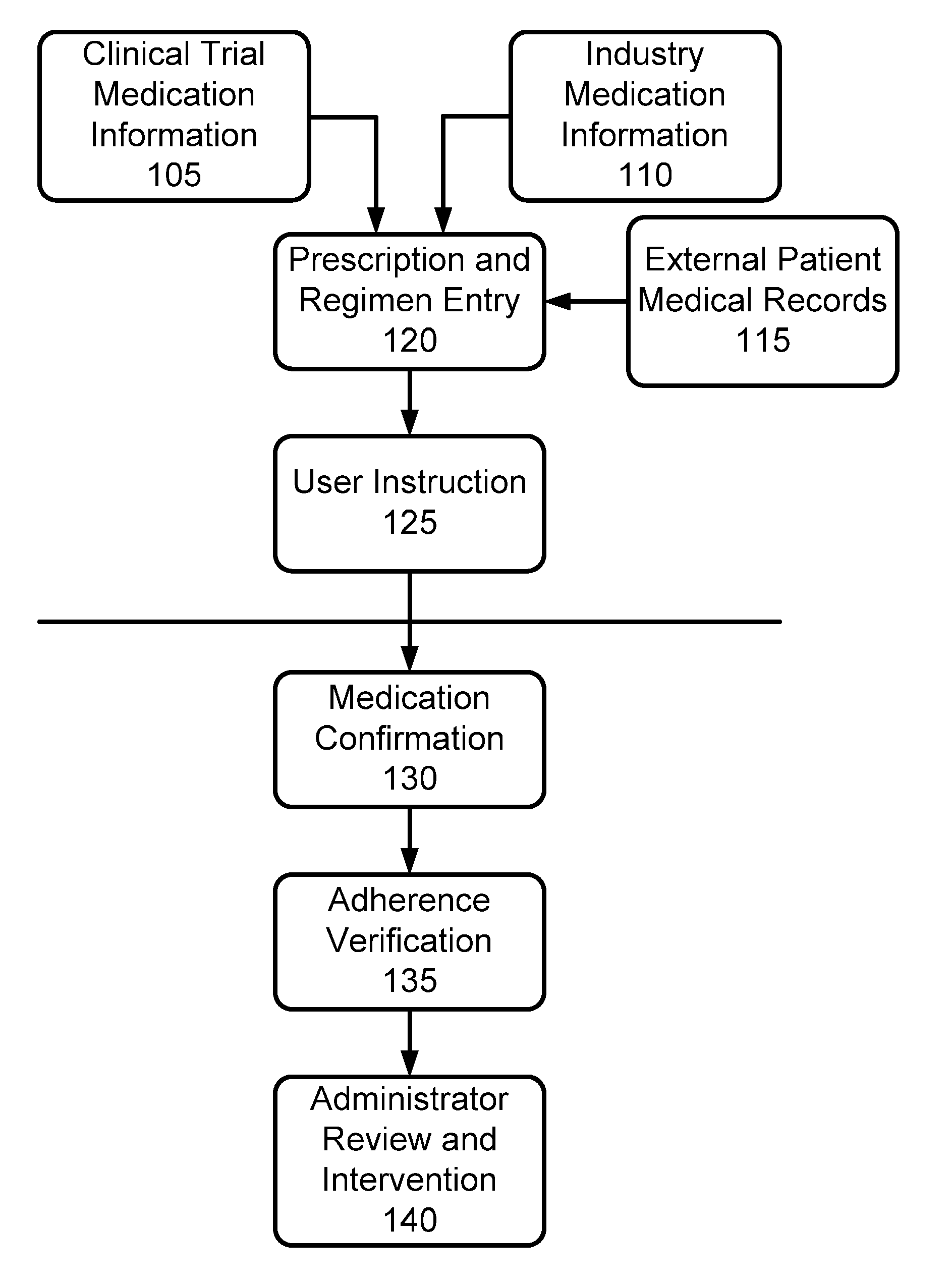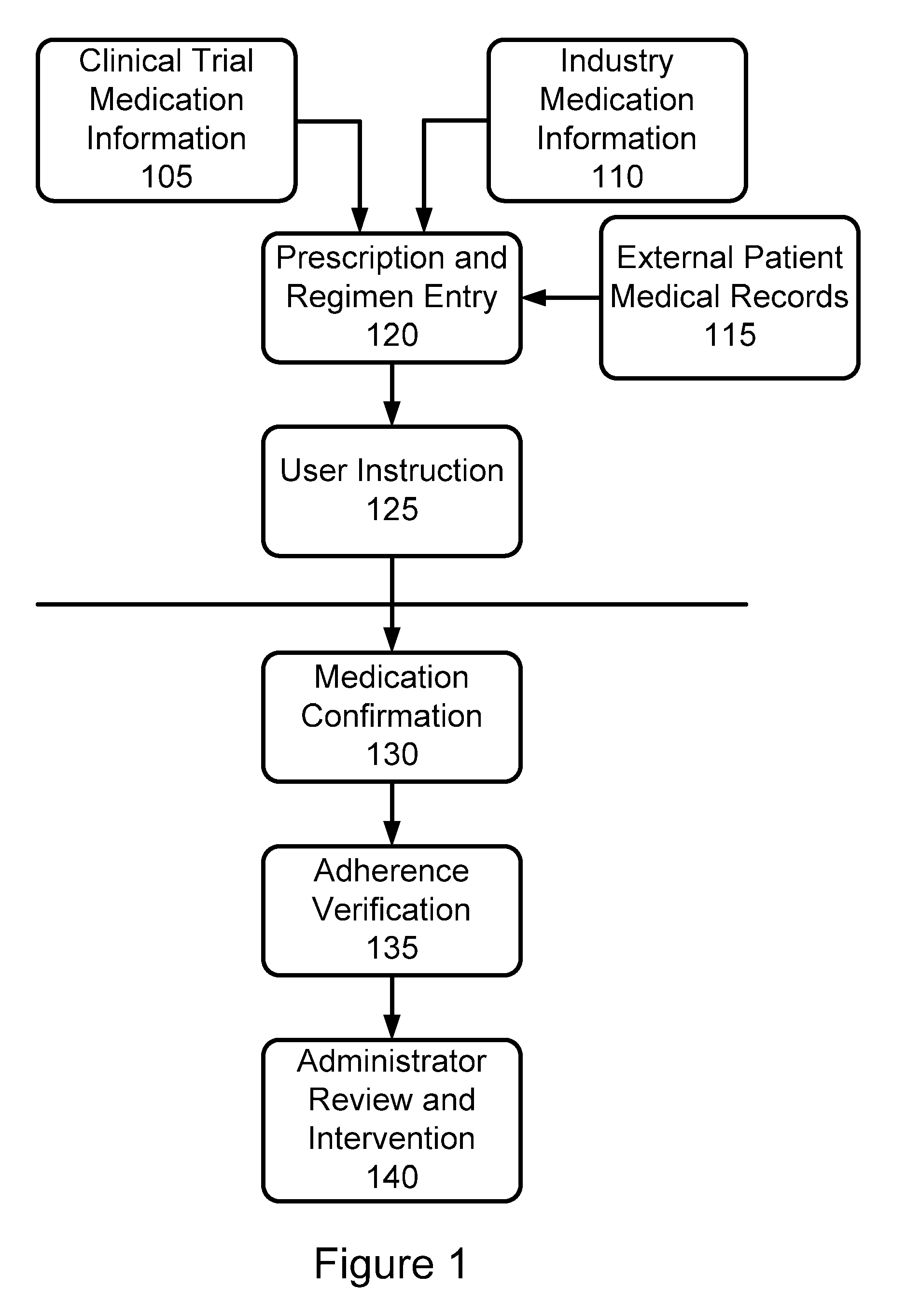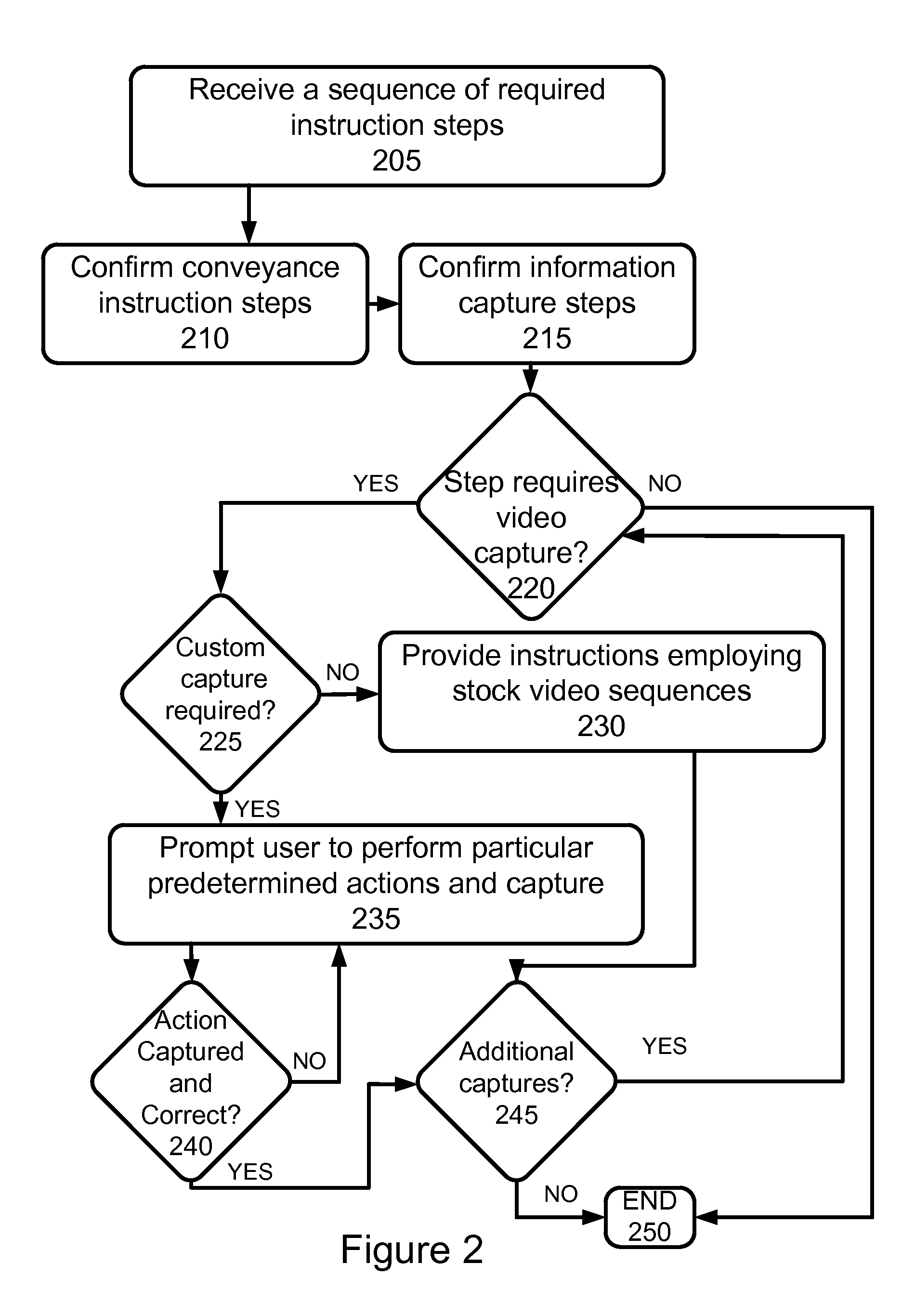Apparatus and method for recognition of patient activities when obtaining protocol adherence data
a technology for obtaining protocol adherence data and patient activities, applied in the field of patient compliance in medication administration protocol scenarios, can solve the problems of poor nonadherence recognition ability of physicians, mixed interventions to improve adherence, poor adherence, etc., and achieve the effect of easy programing
- Summary
- Abstract
- Description
- Claims
- Application Information
AI Technical Summary
Benefits of technology
Problems solved by technology
Method used
Image
Examples
Embodiment Construction
[0028]The invention will now be described making reference to the following drawings in which like reference numbers denote like structure or steps. Referring to FIG. 1, a data flow overview in accordance with the operation of an embodiment of the present invention is shown. In accordance with this embodiment of the invention, information about a particular drug to be the subject of a clinical trial, to be employed in a public health or disease management situation, or the like, or other medication administration program or prescription may be provided in a database 105, and existing industry medication information databases 110 are preferably employed to access prescription, interaction, application, and other available information about any number of proposed prescription and non-prescription medications and their possible interaction with the clinical trial or other medications. Further, patient medical records 115 may be used, and as will be described below, are used in conjunct...
PUM
 Login to View More
Login to View More Abstract
Description
Claims
Application Information
 Login to View More
Login to View More - R&D
- Intellectual Property
- Life Sciences
- Materials
- Tech Scout
- Unparalleled Data Quality
- Higher Quality Content
- 60% Fewer Hallucinations
Browse by: Latest US Patents, China's latest patents, Technical Efficacy Thesaurus, Application Domain, Technology Topic, Popular Technical Reports.
© 2025 PatSnap. All rights reserved.Legal|Privacy policy|Modern Slavery Act Transparency Statement|Sitemap|About US| Contact US: help@patsnap.com



